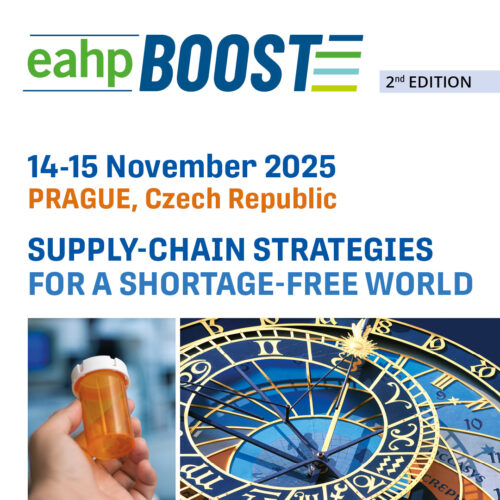Linked to EAHP Statements:
Section 2: Selection, procurement and distribution
Section 3: Production and compounding
Section 4: clinical pharmacy services
Section 5: patient safety and quality assurance
ACPE UAN: 0475-0000-16-005-L04-P. An application based activity.

Speakers


Paul Le Brun – “Ready to use injectable medicines: Alison Beaney – “Ready to use injectable medicines:
is there a need for them and how do we get them?” how can we control the risks?”
Abstract
Adverse events are not only arising from drug-drug or food-drug interactions. Up to one third of all reported adverse events relates to the supply chain and medication process. Many efforts have been made in order to improve and support proper prescribing and administering processes. For dispensing and distribution processes different tools such as automated dose dispensing and a variety of electronic cabinets have been developed. However, non-standard operating procedures involving solubilisation, dilution and preparation of injections and infusions or handling of mixtures are still a challenging field with many risks of generating medication errors. The delivery of ready-to-use medicines issued from SOP controlled preparation eliminates these pitfalls. For many hospital pharmacies delivery of ready-to-use medicines is a major concern requiring additional human and technical resources.
Ready-to-use medicines can be useful for both inpatients and outpatients. In some therapeutic areas they can support home parenteral therapy and seamless care or even provide regenerated patient mobility if therapy intervals can be prolonged by the use of medicines released from elastomeric containers.
Different strategies for obtaining ready-to-use medicines can be applied according to local strategies and national legislation for medicines production. Hospital pharmacies can produce or compound ready-to-use medicines themselves, sub-contracted compounding companies can produce and deliver ready to use medicines to the hospital pharmacies on demand, or the pharmaceutical industry can deliver ready-touse solutions if stability permits.
Teaching goals
- To outline the role of both hospital pharmacies and industry in the development and delivery of ready-to-use medicines;
- To propose a way to share responsibilities by partnership;
- To demonstrate national and regional examples of best practice and of availability of ready-to-use medicines.
Learning objectives
After the interactive session, the participants should be able:
-
to recognise in which cases ready-to-use medicines will contribute to better patient safety;
-
to select those medicines with high added values for hospitals and for patients, if made available as ready-to-use preparation.



























